Lucid Air Sapphire First Drive Review: A class of its own
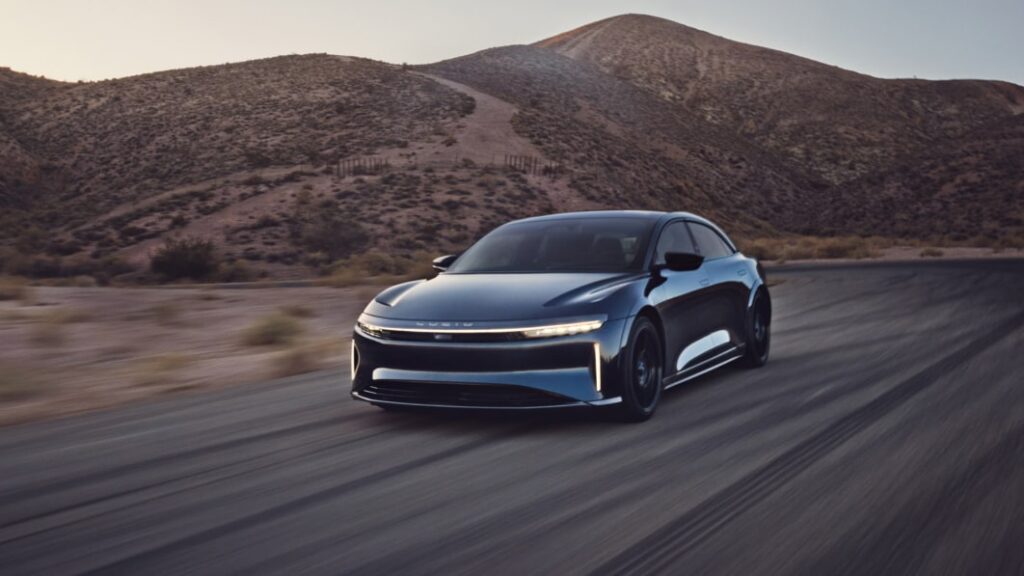
LOS ANGELES — The Lucid Air had an impressive inaugural year. The all-electric sedan garnered its fair share of positive reviews and accolades, proving that its relatively new carmaker has been paying attention to the details in a way that few other upstarts do.
The Lucid Air boasts some truly impressive engineering and throws around some big numbers, especially its current maximum output of 1,050 horsepower and a zero-to-60 time under 3 seconds. Add a bladder-busting estimated range of 516 miles, and this big luxury sedan is nearly unassailable among more established EVs. There is, of course, another big number to consider, and that’s price. Models range from just below $90,000 to over $140,000.
So what’s next for Lucid? In a word, more. More power, more performance, and not surprisingly, more money. The Air Sapphire is the new pinnacle of the lineup, adding a second electric motor to the rear axle, increasing output to 1,234 horsepower and 1,430 pound-feet of torque, and chopping its zero-to-60 time to 1.9 seconds. Meanwhile, the price climbs steeply to a quarter of a million dollars. Thankfully, the engineers saw fit to upgrade the Sapphire with carbon ceramic brakes to get this 5,000-plus pound vehicle slowed down, along with wider high-performance tires and a sport-tuned suspension to keep it on the pavement.
The Sapphire name will serve as Lucid’s performance division, similar to how BMW has its M Division and Mercedes-Benz has AMG. I took this ultimate variant for a short but informative drive in Los Angeles and came away duly impressed.
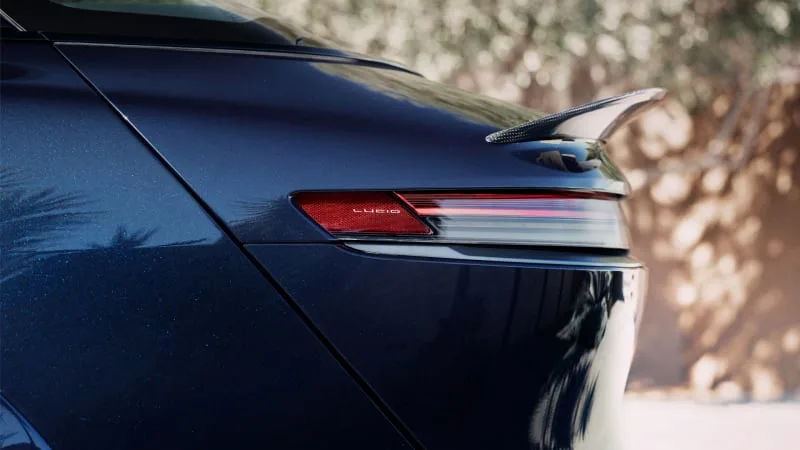
Sensibly, I had every intention of starting out the drive cautious, then ramping up the aggression as I found the courage and confidence. Lucid’s Director of Vehicle Dynamics, David Lickford, had other ideas.
“Foot to the floor,” he said as we were only a block or two into the drive. I immediately stomped the accelerator, launching the Sapphire from 35 mph to I-don’t-know-what quicker than I could gasp and giggle.
“That was in Smooth mode,” Lickford continued, “so you’re only getting 700 hp or so.”
A fraction of a mile later, he let me know that he’s engaging the Sapphire mode, which unleashes more of its performance potential, though thankfully traction and stability control remain engaged. Track mode is available, but we never delved into that on this street drive. As we approached a freeway onramp, he directed me to floor it again once we straighten out. I complied, but L.A.’s notorious traffic allowed for only a second or so of absurd acceleration.
That wasn’t enough to fully evaluate the Sapphire’s power, but it gave me an opportunity to get on the brakes with some aggression. Much as there was no shimmy under acceleration, there wasn’t any drama under hard braking, either. It just executed all of my commands without protest or hesitation.
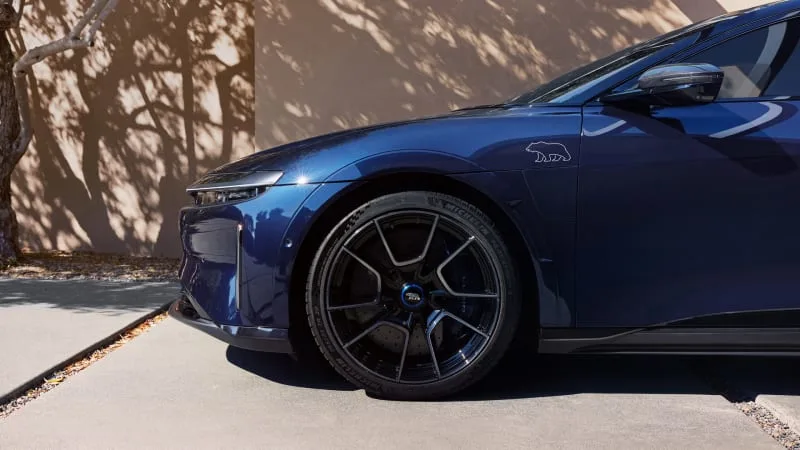

Before I knew it, it was time to start making our way back to the staging location, but a winding hillside road lay between us and our destination. In keeping with the previous few miles, Lickford encouraged me to wring out the Sapphire in the curves. Once again selecting the sportier drive modes, he directed me to “really give it some power through the turns to get a feel for the torque vectoring.”
As we approached an uphill left sweeper, I kept my foot on the accelerator with just enough pressure to maintain the Sapphire’s speed and balance. A smooth tip of the steering wheel revealed how much more agility is in reserve. The nose of the big sedan eagerly pointed into the bend and for a brief moment of steady-state cornering, it settled into the asphalt while smoothly shrugging off the ruts and bumps. Back into the throttle and I could feel the weight shift toward the rear, giving me even more confidence to push harder. The bespoke Michelin Pilot 4S rubber never made so much as a limited squeal. They just tracked beautifully from bend to bend.
The drive to this point already convinced me the Lucid Sapphire was something special, but there was one more surprise in store. At a left-turn signal, the enabler in the passenger seat said, “Halfway through the turn, floor it.”
In my mind, I’m imagining an embarrassing tank slapper, akin to a Mustang leaving a Cars & Coffee gathering just before its wheels are tucked under the body by a curb. I figured he knew what he was doing, so I obliged. With my hands ready to react to a potentially career-affecting crash, I floored it.
The Sapphire, again, just executed. It hunkered down for a split second and shot us out the other side. No wheelspin. No oversteer. All I had to do was steer as though I hadn’t performed one of the most boneheaded maneuvers, on purpose, no less. As the steering wheel unwound, the power increased and before I knew it, my passenger began repeating, “Brake, brake brake,” as we came up on the next turn.
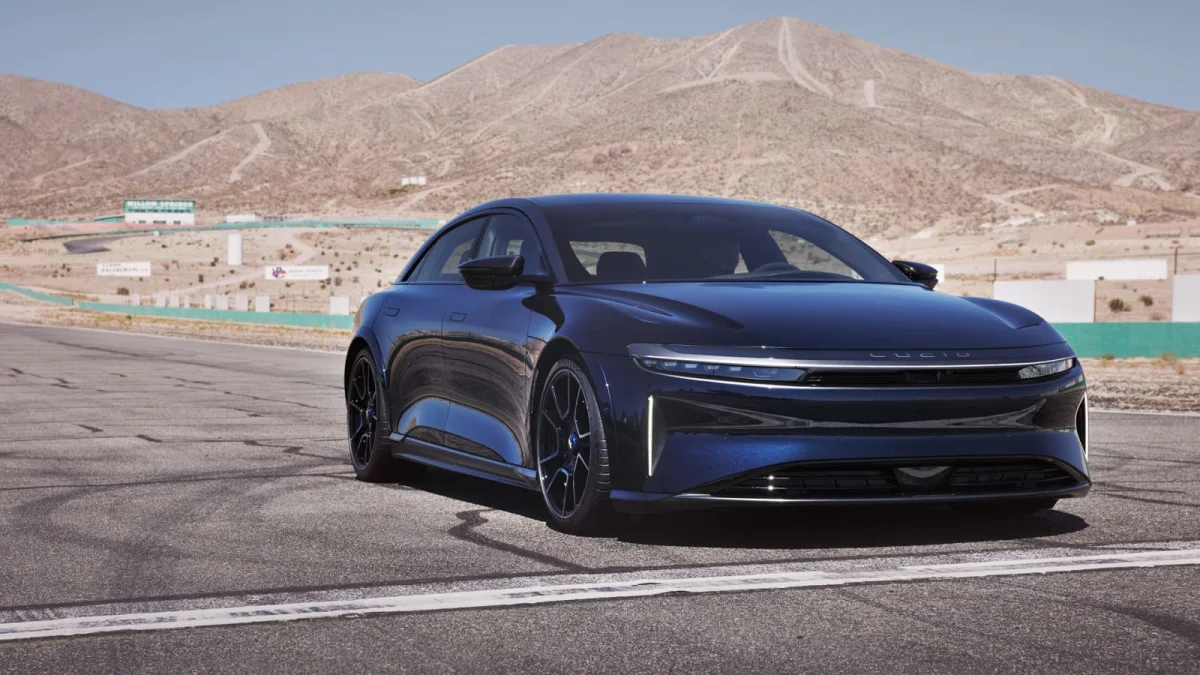
Let’s unpack what just happened. Despite decades of driving experience and spinning more times than I care to admit, the Sapphire defied physics and blew me away. It’s a testament to the smart programming and tuning of the traction and stability control systems in conjunction with those two rear motors. These systems monitor countless data points 1,000 times a second, expertly reacting with more power here and less power there.
It’s reminiscent of the C7 Corvette’s performance traction modes that were intended to make track driving easier for less experienced pilots. That system would cut the power until the wheel straightened, then release the throttle restrictions. It was clunky and felt more like a crutch than a driver’s aid. The Sapphire’s does something similar, but the difference is, it’s actually good.
Just as things got really interesting, the drive was over, leaving me curious as to how the Sapphire will react to a racetrack. With any luck, we’ll find out soon.
All of this performance does have a price, and I’m not just referring to the dollar signs. The Sapphire’s ride quality is firmer than the standard Air, but not the least bit harsh. The difference is subtle and could be equated to the supporting model’s Sport mode. The meatier tires, rear spoiler, and bigger brakes and wheels also affect range. EPA estimates put it at 427 miles, which is obviously quite a few less than the 516 possible with the Air Grand Touring, but still better than most gasoline-powered cars let alone electric ones. Lucid smartly supplies more aerodynamic wheel covers to make up for some of those losses on longer road trips.
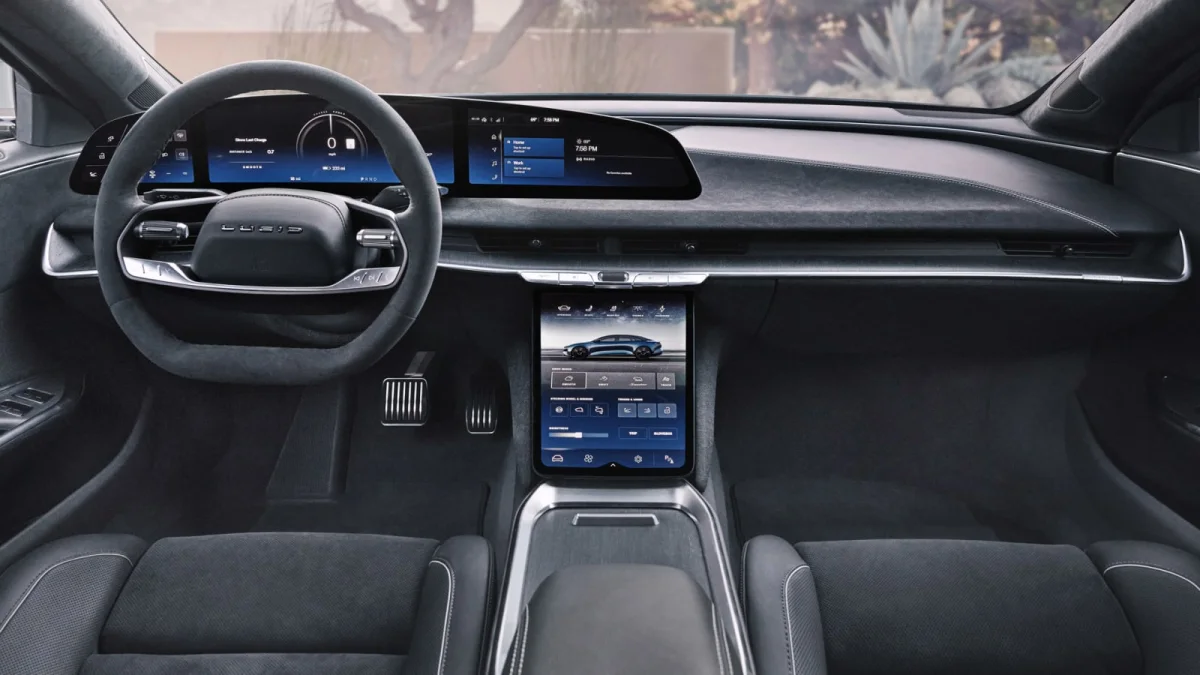
For the initial run of Sapphires, configurations are notably limited. It only comes in a striking metallic midnight blue paint scheme, and the panoramic glass roof is not available. There are also no options, as this model is essentially fully loaded. We’re told other paint choices are in the works for the future, though. Unlike some other exorbitantly priced luxury vehicles from Bentley or Maybach, Lucid does not offer a customization program. Then again, if you can drop a quarter million on a car, you should also be able to afford to hire a craftsperson to modify your Sapphire to your particular preference.
As impressive and inspiring as the Lucid Sapphire is, it presents some thought-provoking questions. Who is this vehicle for? Who would legitimately want to put a big luxury vehicle on a racetrack, and if they don’t, why would they bother considering one? Is it a case of, “If you build it they will come,” or is this simply another way to assert financial dominance over your annoying hedge fund neighbor and their lowly Lucid Air Grand Touring? Those questions are best answered by the few that can afford one, but I’m glad the Sapphire exists.
That also begs the question of what the Sapphire’s competition is. The Tesla Model S Plaid is a logical rival with 1,020 hp, but its build quality and overall performance land well short of the Lucid’s. It does cost less than half of the Sapphire, though. The Porsche Taycan Turbo S comes close with a price that flirts with $200,000, but “only” makes 750 hp. The related Audi RS e-tron GT rings in at $145,000 and produces 637 hp. For something more in the Sapphire’s size class, the Mercedes-AMG EQS costs $150,000 and churns out 751 hp. If you’re more about prestige than performance, perhaps the Rolls-Royce Spectre is in the cards. Priced at $420,000, that should keep the neighbors quiet for a while.
With all of this in mind, the Lucid Air Sapphire is in a class of its own. There’s simply nothing that delivers comparable performance, range, luxury, comfort, and refinement in a single package.
Related Video:


